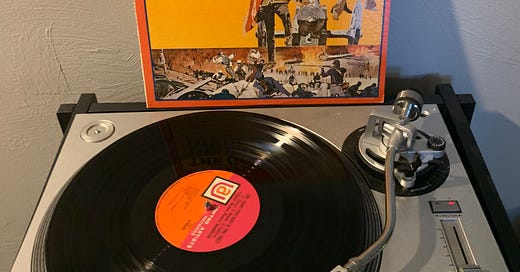This score defines a genre of movies in the 60s and 70s which were about the old west (and they were some of the most popular titles of the day).
The term ‘spaghetti western’ comes from the low budget movies made overseas in mainly in Italy. These low budget films were very popular in Europe and that popularity made their way to the United States and gave rise to the creative composer, Ennio Morricone.
Morricone got his big break though came when he worked with his schoolmate, Sergio Leone on the film, A Fistful of Dollars. This rise to stardom on the composing circuit would lead him to other projects with Leone, including as what they are now called as the, Dollars Trilogy.
These films were extremely low budget and Morricone could not afford the large arrangements of a full orchestra so he relied on sound effects to tell the story. These sound effects including whips cracking, gunshots, and a newcomer to the industry, an electric Fender guitar.
Two songs that stand out in this film are, The Ecstasy of Gold and The Good, The Bad and The Ugly.
The Ecstasy of Gold, contains various instruments and the voice of Edda Dell’Orso who was well known for her frequent collaborations with Morricone. This song plays as Tuco looks for the buried gold in the cemetery. Aptly named, The Ecstasy of Gold is the ultimate treasure which the trio had been looking for since the start of the movie.
The Good, The Bad, and The Ugly theme has a bit more of meaning than the last song as its arrangement has 3 distinct sounds being used. A flute for Eastwood’s character, Blondie, an ocarina for Angel Eyes, and human voices for Tuco. The opening was supposed to symbolize coyotes howling in the background to give life to the tumbleweeds and the expansive old west. Many of the close ups and shots in the film were supposed to match the feelings of each character as this song played. Hence the panning to each character as the individual instrument played.
—
Ennio Morricone - The Good, The Bad, and the Ugly
United Artists Records, 1968




